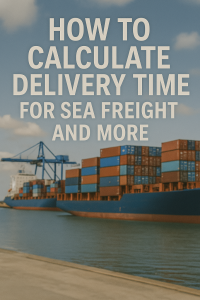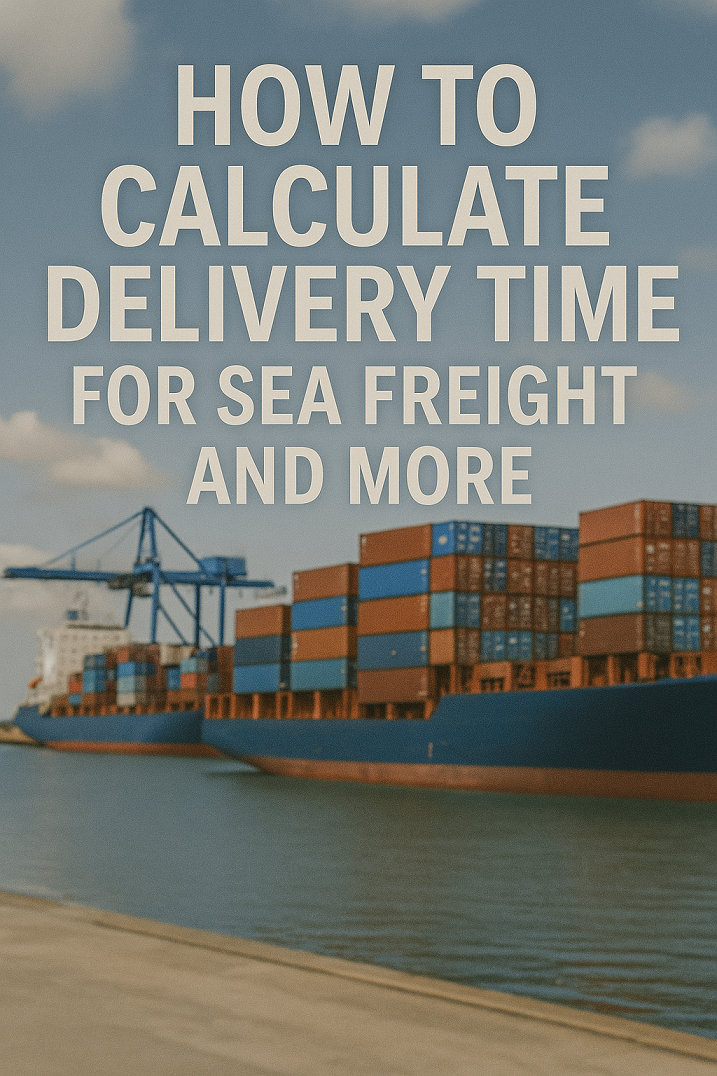Discover what shipping transit time is, how to calculate delivery time, average transit time for sea freight, and the difference between transit time vs lead time. A must-read guide for maritime students, cadets, ship officers, and logistics professionals.

Why Transit Time Matters in Global Shipping
Have you ever tracked a shipment and wondered why it takes 30 days by sea but only 3 days by air—even though both leave on the same date? That’s the importance of transit time in logistics.
For maritime students, cadets, ship officers, shipping companies, and supply chain professionals, understanding how to calculate delivery time, the meaning of shipping transit time, and its impact on the supply chain is essential for efficient operations.
This SEO-optimized and educational article covers:
-
Shipping transit time explained
-
Transit time vs lead time
-
Average transit time for sea freight
-
Shipping time estimates and real-world applications
What Is Transit Time in Shipping?
Transit time refers to the total time it takes for cargo to move from the point of departure to the point of arrival, excluding delays related to booking, documentation, or warehousing.
It is a core metric used to:
-
Estimate delivery timelines
-
Plan supply chain schedules
-
Track performance of carriers
-
Set realistic customer expectations
📌 Example: If a container leaves Singapore on June 1st and arrives in Rotterdam on June 22nd, the transit time is 21 days.
Transit Time vs Lead Time: What’s the Difference?
SEO Keyword: transit time vs lead time
| Metric | Definition | Includes |
|---|---|---|
| Transit Time | Time goods are in motion | Port-to-port or door-to-door |
| Lead Time | Total time from order placement to delivery | Production, transit, delivery |
✅ Summary:
-
Transit Time = Shipping duration
-
Lead Time = Production + Documentation + Transit + Final Delivery
For logistics planning, lead time is broader, while transit time is specific to transportation.
How to Calculate Delivery Time (Transit Time Formula)
SEO Keyword: how to calculate delivery time
To estimate delivery time, use the following:
Delivery Time (Days) = Transit Time + Customs Clearance + Handling Time at Origin/Destination
Key Components:
-
Sailing time or transit time (depends on mode: sea, air, land)
-
Port/terminal handling time (loading, unloading, container movement)
-
Customs processing time
-
Last-mile delivery (for door-to-door service)
✏️ Pro Tip: Add buffer days (2–5 days) for unexpected delays due to weather, port congestion, or documentation issues.
Average Transit Time for Sea Freight (By Region)
SEO Keyword: average transit time for sea freight
Transit times vary depending on origin, destination, vessel schedule, and whether the route is direct or involves transshipment.
| Route | Average Transit Time (FCL) |
|---|---|
| Shanghai → Los Angeles | 14–18 days |
| Singapore → Rotterdam | 20–25 days |
| Mumbai → Dubai | 5–7 days |
| Hamburg → New York | 10–14 days |
| Tokyo → Sydney | 12–15 days |
🧭 LCL (Less than Container Load) can add 3–5 days for consolidation/deconsolidation.
Shipping Time Estimates by Mode
| Mode of Transport | Transit Time (Average) | Best Used For |
|---|---|---|
| Sea Freight | 5–45 days (based on route) | High-volume, low-cost shipments |
| Air Freight | 1–5 days | Urgent, high-value cargo |
| Rail Freight | 5–20 days | Intercontinental (e.g., China–Europe) |
| Road Freight | 1–10 days | Intra-regional or domestic deliveries |
Factors That Affect Shipping Transit Time
⚓ 1. Shipping Route & Distance
-
Direct vs transshipment
-
Canal routes (e.g., Panama or Suez)
🌊 2. Mode of Transport
-
Sea is slower but cost-effective
-
Air is faster but costly
🚢 3. Carrier Type and Schedule
-
Liner vs chartered vessels
-
Frequency of departures
🧾 4. Port Congestion or Delays
-
Weather, strikes, equipment shortage
🧰 5. Container Type and Customs Requirements
-
Reefer (refrigerated) cargo may require special handling
-
Restricted goods require more documentation and inspections
Applications in Maritime Education and Shipping Practice
🎓 For Students & Cadets:
-
Calculate transit time in navigation and cargo operations exercises
-
Understand implications for voyage planning and freight contracts
🏢 For Ship Officers & Logistics Teams:
-
Optimize vessel utilization
-
Prepare ETAs for port authorities and cargo owners
-
Improve on-time performance metrics
📘 Case Study: A shipping company reduced average delay by 3 days by rerouting vessels from the Suez Canal to Cape of Good Hope during congestion—highlighting the importance of transit time monitoring.
Latest Trends and Outlook in Transit Time Optimization
📈 1. AI-Powered Delivery Estimates
-
Real-time data improves transit time forecasting
-
Platforms like project44 and FourKites help shippers monitor ETA accuracy
🌱 2. Slow Steaming for Fuel Savings
-
Some carriers opt to reduce speed to cut fuel consumption, extending transit time but lowering emissions
🔄 3. Digital Twins and Predictive Planning
-
Simulation tools help predict weather impacts and optimize routes
-
Useful for training and maritime research
FAQs: People Also Ask
What is transit time in shipping?
Transit time is the number of days cargo spends in transport from the departure point to the arrival point.
How do I calculate transit time?
Use the formula:
Transit Time = Estimated Days in Transit + Buffer for Port Handling + Customs Clearance
What’s the average transit time for sea freight?
Typically 15–30 days, depending on route, cargo type, and carrier schedule.
Is transit time part of lead time?
Yes, transit time is a component of lead time, which includes order processing, manufacturing, and delivery.
Conclusion: Mastering Transit Time for Maritime and Logistics Success
Whether planning a voyage, estimating delivery for a client, or managing an export operation, knowing how to calculate shipping transit time and understanding its relationship with lead time is a crucial skill in today’s fast-moving global trade environment.
From sea freight calculations to last-mile delivery estimates, transit time remains a cornerstone of successful maritime and supply chain operations.
⚓ Explore More:
References & Further Reading
-
UNCTAD – Review of Maritime Transport: unctad.org
-
FIATA – Transit Time & Freight Logistics Manual: fiata.org
-
World Bank – Logistics Performance Index: lpi.worldbank.org
-
Shipping and Freight Resource – Transit Time Trends: shippingandfreightresource.com

